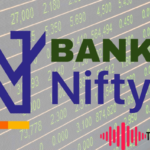Introduction
GIFT Nifty Live is a term that has gained significant attention among investors and traders, especially after the transition from SGX Nifty to GIFT Nifty. This change has implications for market participants, particularly in terms of trading hours and market accessibility. In this article, we will explore what GIFT Nifty Live is, its significance, trading hours, and how it impacts investors.
What is GIFT Nifty Live?
GIFT Nifty Live refers to the real-time trading of Nifty 50 index futures on the NSE International Exchange (NSE IX) located in the Gujarat International Finance Tec-City (GIFT City) in India. Previously known as SGX Nifty, these futures contracts were traded on the Singapore Exchange. The transition to GIFT Nifty was completed on July 3, 2023, aiming to centralize trading within India’s jurisdiction and enhance market liquidity.
Significance of GIFT Nifty Live
The introduction of GIFT Nifty Live holds several key benefits:
- Extended Trading Hours: GIFT Nifty operates nearly 21 hours a day, divided into two sessions. The first session runs from 6:30 AM to 3:40 PM IST, and the second session from 4:35 PM to 2:45 AM IST. This extensive trading window allows investors to react to global market movements in real-time.
Equity Pandit
- Enhanced Market Access: By relocating trading to GIFT City, India aims to attract international investors, providing them with a platform to trade Indian index futures within a regulated environment.
- Regulatory Oversight: Trading within India’s jurisdiction ensures better regulatory oversight, aligning with the country’s financial market policies and reducing dependency on foreign exchanges.
Trading Hours and Sessions
GIFT Nifty Live operates in two sessions:
- Morning Session: 6:30 AM to 3:40 PM IST
- Evening Session: 4:35 PM to 2:45 AM IST
This schedule allows traders to engage with the market almost around the clock, facilitating responses to international market developments.
Impact on Investors
For investors, GIFT Nifty Live offers several advantages:
Real-Time Market Reaction:
The extended trading hours enable investors to respond promptly to global events affecting the market.
Increased Liquidity:
The centralized trading platform within GIFT City will enhance liquidity, improve price discovery, and create better trading opportunities.
Regulatory Confidence:
Operating under Indian regulatory frameworks offers investors greater confidence in the trading environment.

FAQs
1. What is the difference between SGX Nifty and GIFT Nifty?
SGX Nifty was the Nifty 50 futures contract traded on the Singapore Exchange. GIFT Nifty is the rebranded version, now traded on the NSE International Exchange in GIFT City, India. The transition aims to centralize trading within India and enhance market liquidity.
2. How can I access GIFT Nifty Live data?
GIFT Nifty Live data is available through various financial news platforms and trading websites that provide real-time market information. Investors can also access data through brokerage services that offer trading in NSE IX products.
3. What are the trading hours for GIFT Nifty?
GIFT Nifty operates in two sessions: the morning session from 6:30 AM to 3:40 PM IST, and the evening session from 4:35 PM to 2:45 AM IST, totaling nearly 21 hours of trading.
4. Why was the transition from SGX Nifty to GIFT Nifty made?
The transition was made to centralize trading within India’s jurisdiction, enhance market liquidity, and provide international investors with a regulated platform to trade Indian index futures.
5. Can international investors trade GIFT Nifty?
Yes, international investors can trade GIFT Nifty through the NSE International Exchange in GIFT City, which is designed to attract global participants.
Conclusion
GIFTS Nifty Live represents a significant development in India’s financial markets, offering extended trading hours and enhanced market access for investors. The transition from SGX Nifty to GIFT Nifty aims to centralize trading within India, providing a regulated and liquid platform for trading Nifty 50 futures. Investors can benefit from real-time market reactions and increased confidence in the trading environment.







